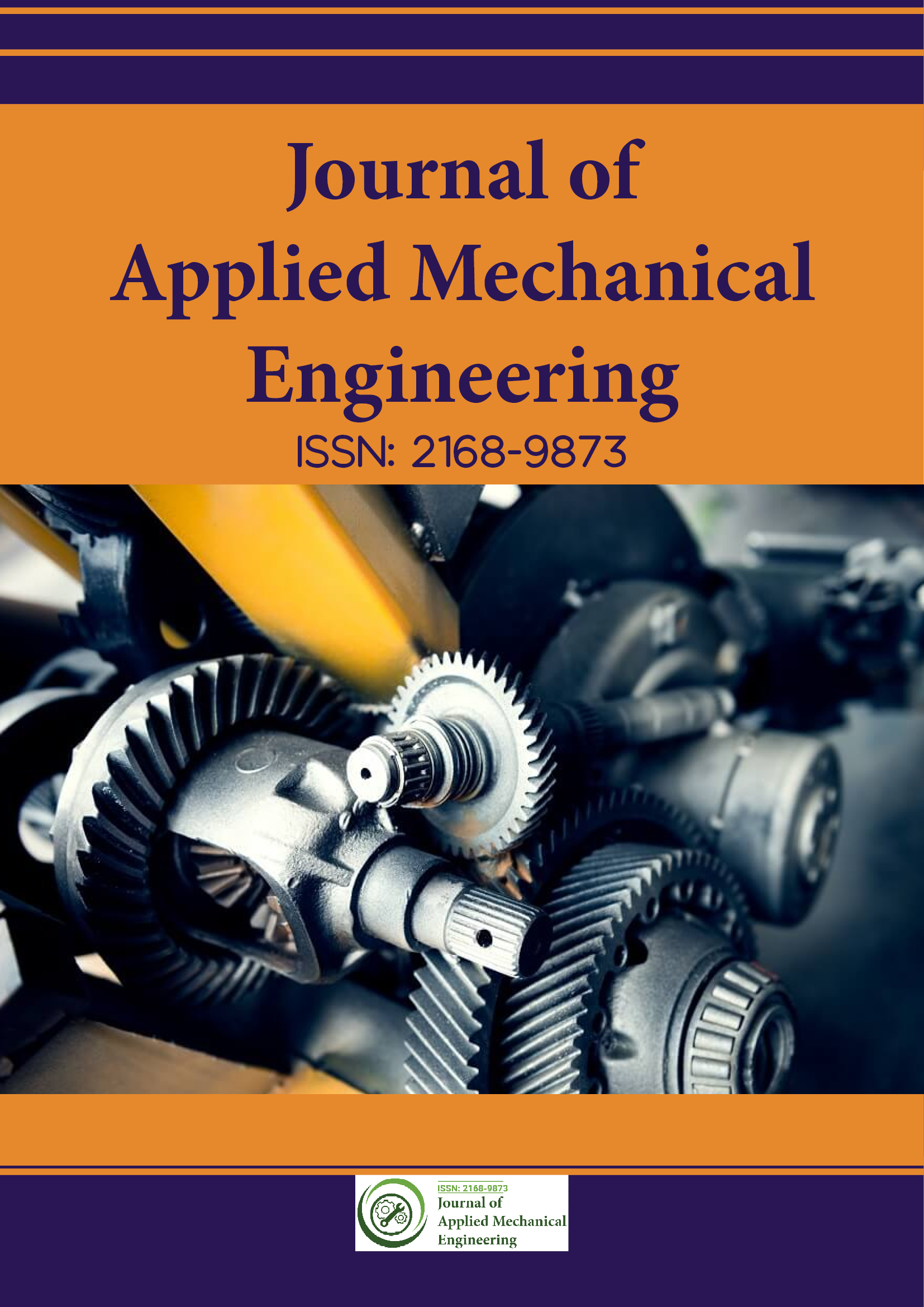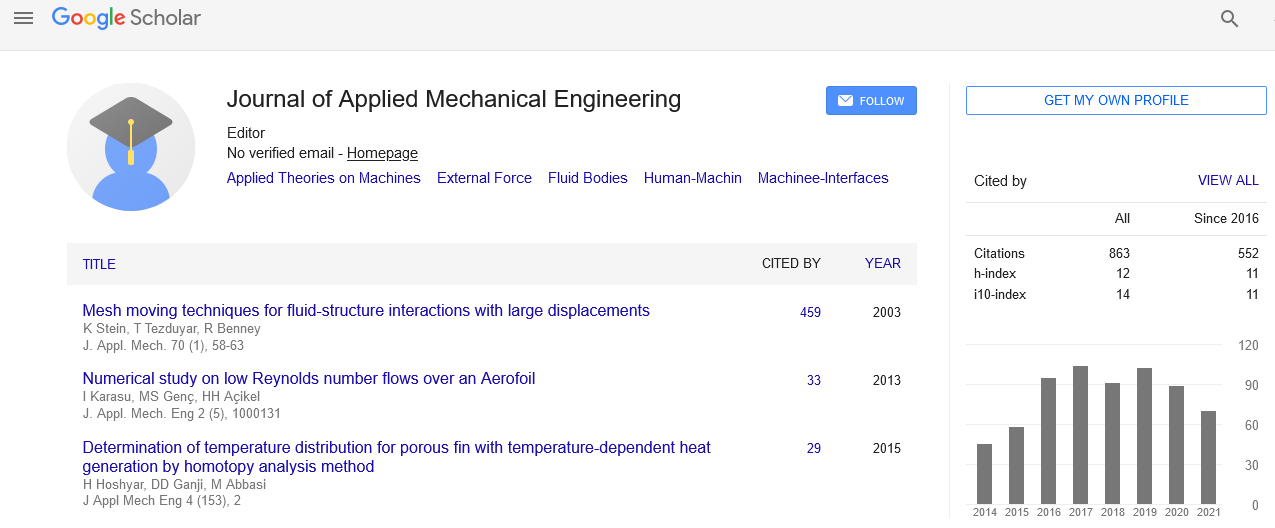Indexed In
- Genamics JournalSeek
- JournalTOCs
- CiteFactor
- RefSeek
- Hamdard University
- EBSCO A-Z
- OCLC- WorldCat
- Publons
- Google Scholar
Useful Links
Share This Page
Journal Flyer

Open Access Journals
- Agri and Aquaculture
- Biochemistry
- Bioinformatics & Systems Biology
- Business & Management
- Chemistry
- Clinical Sciences
- Engineering
- Food & Nutrition
- General Science
- Genetics & Molecular Biology
- Immunology & Microbiology
- Medical Sciences
- Neuroscience & Psychology
- Nursing & Health Care
- Pharmaceutical Sciences
Opinion Article - (2024) Volume 13, Issue 1
Evolution of Machine Theories: From Mechanics to Artificial Intelligence
Jessica Davis*Received: 28-Feb-2024, Manuscript No. JAME-24-26505; Editor assigned: 01-Mar-2024, Pre QC No. JAME-24-26505 (PQ); Reviewed: 15-Mar-2024, QC No. JAME-24-26505; Revised: 22-Mar-2024, Manuscript No. JAME-24-26505 (R); Published: 29-Mar-2024, DOI: 10.35248/2168-9873.24.13.520
Description
The study and application of theories related to machines encompass a diverse array of disciplines, including physics, engineering, computer science, and materials science. These theories are pivotal in understanding how machines function, how they can be improved, and how they can be integrated into various sectors of society to enhance productivity and innovation. At the core of machine theory is the concept of mechanics, the branch of physics that deals with the motion of objects and the forces that act upon them. Newton’s laws of motion describe the relationship between a body and the forces acting upon it, providing a framework for analyzing the behavior of moving parts in a machine. One of the primary applied theories in machine design is the theory of kinematics, which focuses on the motion of objects without considering the forces that cause this motion. Kinematics is essential in the study of mechanisms, which are assemblies of moving parts that transmit or modify motion. By understanding the relationships between different components, engineers can optimize the performance and durability of machines.
Complementing kinematics is the theory of dynamics, which considers the forces that cause motion. Dynamics is divided into two main types- kinetics, which deals with the forces that produce motion, and statics, which deals with forces in systems at rest. In machine design, dynamics is acute for analyzing the stresses and strains that components will experience under various operating conditions. In designing a connection or a crane, engineers must consider the dynamic loads, such as wind, traffic, or weight of the lifted objects, to ensure safety and reliability. The advent of computer technology has significantly advanced the application of theoretical principles in machine design. Computational methods, such as Finite Element Analysis (FEA), allow engineers to simulate the behavior of machines under different conditions with high precision. FEA divides a complex structure into smaller, manageable elements and uses mathematical models to predict how each element responds to external forces. This technique is invaluable in identifying potential weaknesses in a design and in making informed decisions about modifications before physical prototypes are built. The integration of Computer-Aided Design (CAD) and Computer-Aided Engineering (CAE) tools streamlines the design process, reducing development time and costs. The rise of automation and robotics has brought new dimensions to the application of machine theories. Theories of control systems, which focus on managing the behavior of dynamic systems, are fundamental in robotics.
The field of Artificial Intelligence (AI) further enhances the capabilities of machines by enabling them to learn from data and make decisions. Machine learning, involves training algorithms to recognize patterns and make predictions based on large datasets. This capability is transforming various industries, from manufacturing, where predictive maintenance algorithms can forecast equipment failures before they occur, to healthcare, where AI-driven diagnostic tools assist doctors in identifying diseases with high accuracy. The integration of AI with robotics leads to the development of intelligent machines that can adapt to changing environments and perform complex tasks with minimal human intervention.
Material science also plays an essential role in the advancement of machine design. The development of new materials with superior properties, such as high strength to weight ratios, corrosion resistance, and thermal stability, enables the creation of more efficient and durable machines. The use of composite materials and advanced alloys in aerospace engineering allows for the construction of lighter and stronger aircraft, which improves fuel efficiency and performance. Nanotechnology, which involves manipulating matter at the atomic and molecular levels, opens up possibilities for creating materials with unique properties, such as self-healing coatings and hard ceramics, further pushing the boundaries of what machines can achieve. Sustainability is an increasingly important consideration in the design and application of machines. Theories of sustainable engineering emphasize the development of machines and systems that minimize environmental impact and conserve resources. This involves designing for energy efficiency, using renewable materials, and considering the entire lifecycle of a product, from production to disposal. The design of Electric Vehicles (EVs) incorporates principles of sustainability by reducing reliance on fossil fuels and minimizing emissions.
Citation: Davis J (2024) Revolution in Production: Considering Additive Manufacturing Effect. J Appl Mech Eng. 13:520.
Copyright: © 2024 Davis J. This is an open access article distributed under the terms of the Creative Commons Attribution License, which permits unrestricted use, distribution, and reproduction in any medium, provided the original author and source are credited.

